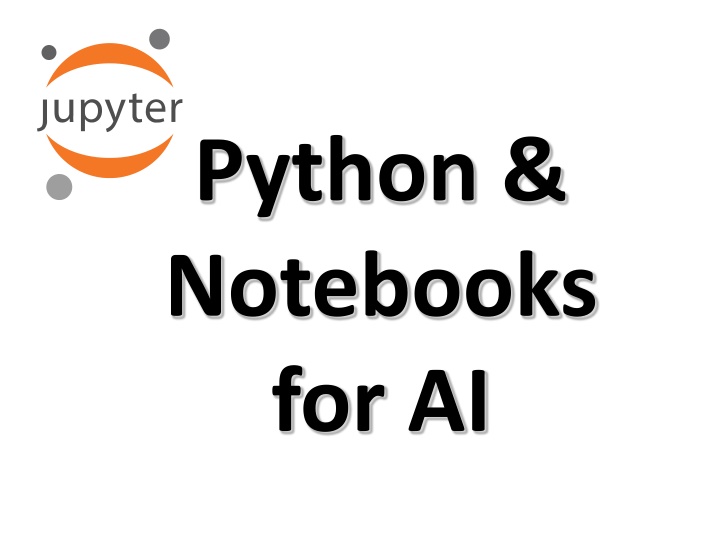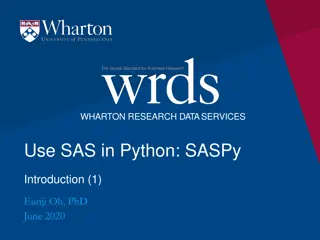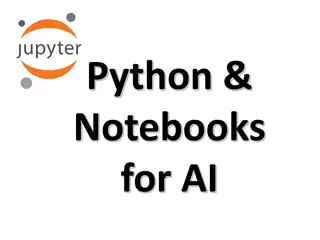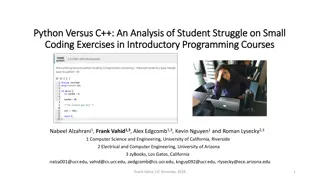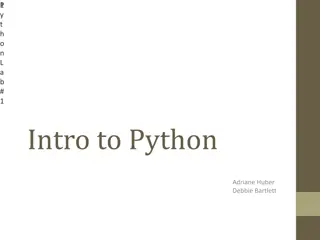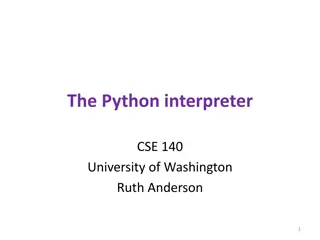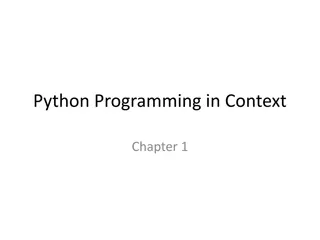Python Notebooks for AI
Python has become the most popular programming language due to its ease of learning and use, along with a large library of modules. It is particularly well-suited for AI development, with new neural network packages leveraging efficient C modules. Jupyter Notebooks provide a powerful platform for interactive document creation and sharing, making it ideal for rapidly exploring new ideas in the evolving field of AI.
Download Presentation

Please find below an Image/Link to download the presentation.
The content on the website is provided AS IS for your information and personal use only. It may not be sold, licensed, or shared on other websites without obtaining consent from the author.If you encounter any issues during the download, it is possible that the publisher has removed the file from their server.
You are allowed to download the files provided on this website for personal or commercial use, subject to the condition that they are used lawfully. All files are the property of their respective owners.
The content on the website is provided AS IS for your information and personal use only. It may not be sold, licensed, or shared on other websites without obtaining consent from the author.
E N D
Presentation Transcript
Python & Notebooks for AI
Why Python Python has become the most popular programming language today by some metrics It s a great higher-level programming language Easy to learn and use Many interesting and powerful features Large library of modules; easy to install Drawbacks: slow (interpreted); few built-in datatypes (no arrays!), poor multiprocessing, Overcome by new modules implementing efficient data structures in C (e.g., Numpy)
Why Python for AI? AI is currently undergoing a Cambrian explosion New ideas appear every month and must be evaluated and explored rapidly to maintain an advantage or even keep up Applies to companies, researchers, students Python is great for rapid development New neural network packages (e.g., TensorFlow, PyTorch) use efficient C modules for expensive computing parts, visualization, etc.
Jupyter Notebooks Current Python notebook software, replacing iPython Open source, browser- based application to create and share interactive documents with Live Python code (also R, Julia, Scala, Bash, ) Visualizations Narrative Text Also has a console window and file mover
Many ways to use Install on your computer Pip install jupyter; cd to working directory; execute command jupyter notebook ; visit browser In your browser, access UMBC s remote Jupyter server, https://jupyter.rs.umbc.edu/ Requires authorization and then logging in Access Google s free Colab server at https://colab.research.google.com/ Powerful, harder to work with your local files Binder https://jupyter.org/binder is another free remote service
Lets try it Example: code to solve water jug problems with two jugs
